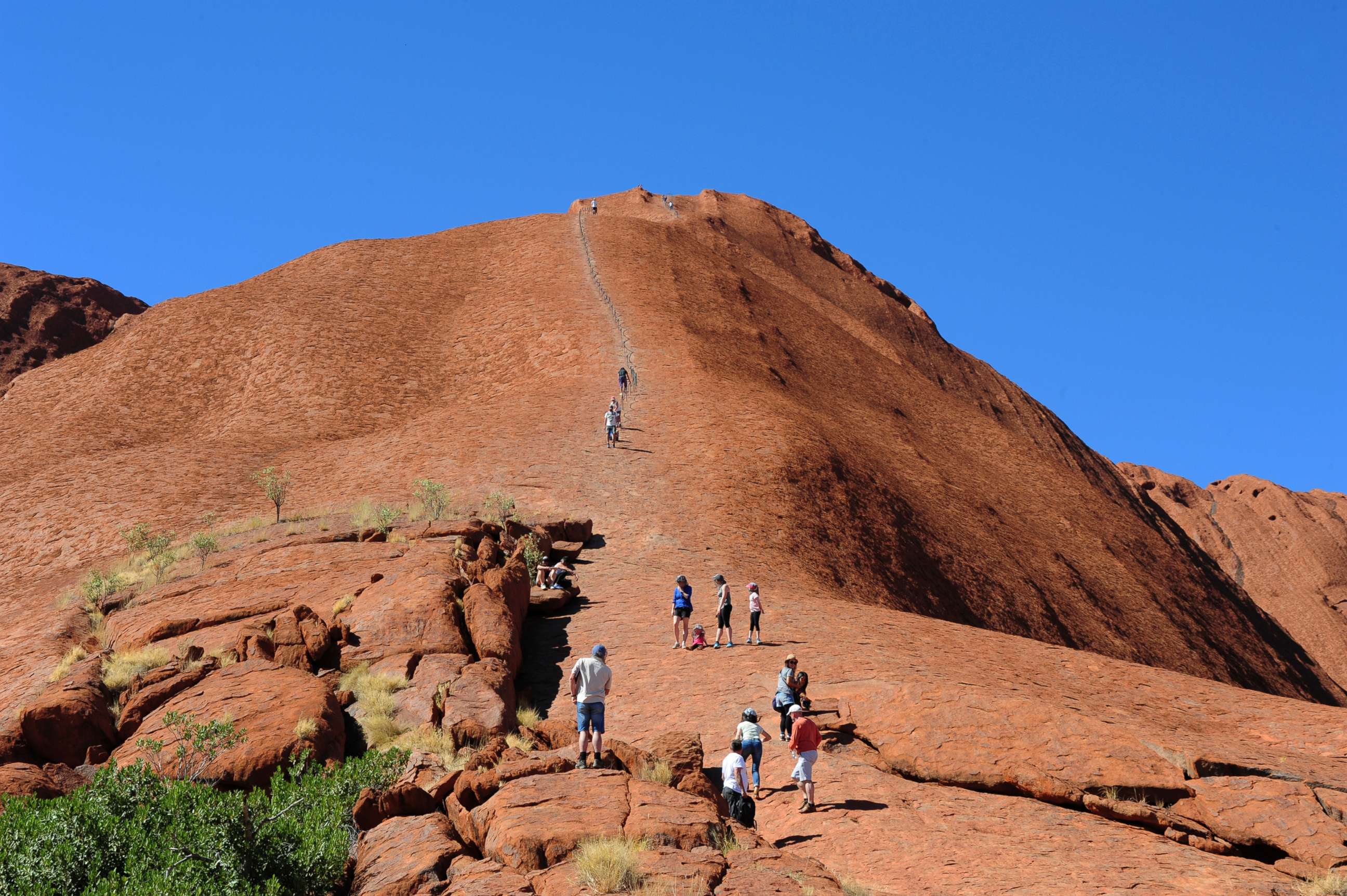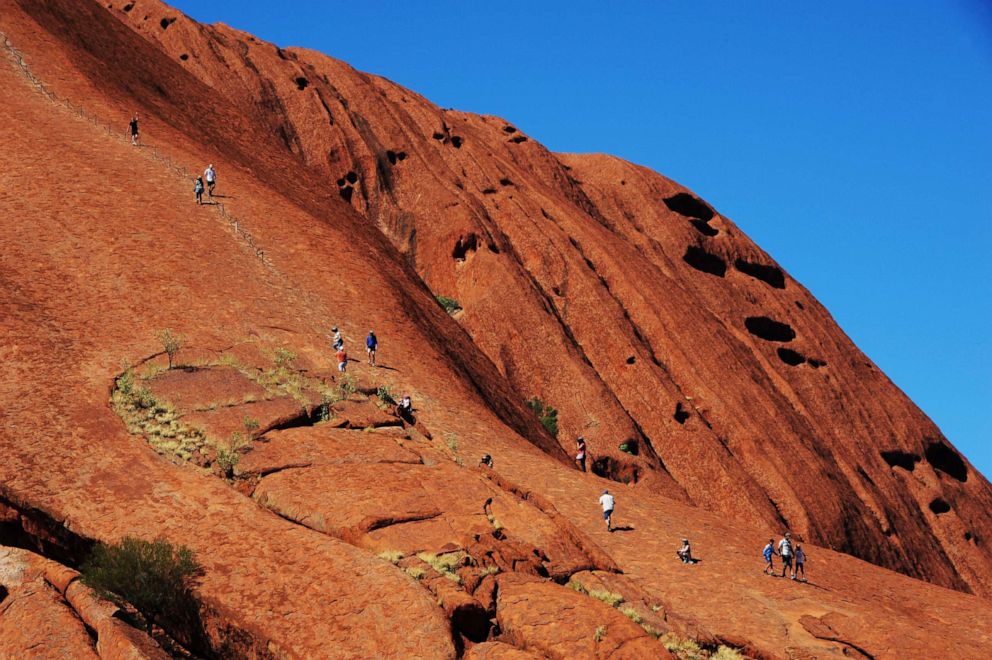Tourists flock to sacred Uluru site before climb ban, leave mounds of trash behind
The climb ban goes into effect after repeated requests for people not to climb.
Australia's landmark sandstone, considered a site of "great spiritual significance," has been turned into something of a trash heap as tourists flock in droves trying to beat the upcoming climbing ban.
Tourists who have made their way to Uluru, also known as Ayers Rock, before it officially shuts climbing down on Oct. 26 came under fire for their treatment of the land, specifically what some described as their dismissal of Indigenous wishes and the trails of trash left behind.
The ban at Uluru, located at the Uluru-Kata Tjuta National Park in Petermann, comes after repeated requests from the Indigenous Anangu people asking visitors not to climb it -- requests that have been largely ignored.
Previously, the climb was not strictly prohibited but visitors were asked to respect the local law and culture by not climbing Uluru.
The landscape is considered a “deeply sacred place” with “great spiritual significance” to the Anangu people, according to the country’s official Northern Territory website.
Jacob Gaut, 28, of Melbourne, recently visited the national park and was shocked to see a “large number of tourists” ignoring signs asking people not to climb
“Instead of climbing, we chose to take the Base of Uluru walk which is about a 10 km circuit walk, which was a great was to take in the beauty and immensity of the rock,” Gaut wrote ABC News via email, describing a roughly 6.2 mile walk.
“We chose to respect the wishes of the traditional owners,” he added.

Gaut said that along the way, he spotted mounds of trash.
“We saw a lot of rubbish left around,” he said. “General food rubbish on the sides of the roads leading up to and away from the actual rock.”
Other uncouth behavior Gaut detailed in his email included bikers riding up the sides of the rock, tourists taking photos in areas where photography is not permitted, and visitors touching rock paintings.
“Judging by the disrespect witnessed at the Rock, this [climbing] ban can't come quick enough,” he added.
The National Parks Conservation Association warned of the dangers of leaving behind trash, specifically noting the lasting impact it can have on the environment and its inhabitants.

“Litter isn’t just ugly to encounter on the trail — it can become a serious issue for wildlife, especially food waste,” association officials wrote in a blog post in April 2019.
“Many species will become desensitized to humans if they become accustomed to finding half-eaten sandwiches and candy bars in populated areas," the officials continued in the post. "When bears, coyotes and other animals see people as food sources, it can cause wildlife to become less afraid and more likely to approach humans, creating potentially dangerous situations.”
Uluru is home to 21 mammal species, 178 bird species, 73 reptile species and thousands of spiders, ants and other bugs.
Visitors are advised to follow the "pack it in, pack it out" mantra when visiting all national parks, association spokeswoman Kati Schmidt told ABC News
The rock stands at 2,831 feet tall. Geologists estimate its formation began around 550 million years ago.
Tourists are urged against climbing it not just out of respect for the Anangu people but also for safety reasons.
“Some people have died while attempting to climb Uluru, while many others have been injured,” according to Northern Territory's website.
The site encourages visitors to take in the “mighty rock” by embarking on the base walk.
“This is the best way to fully appreciate the natural and cultural beauty of Uluru,” according to the site.



